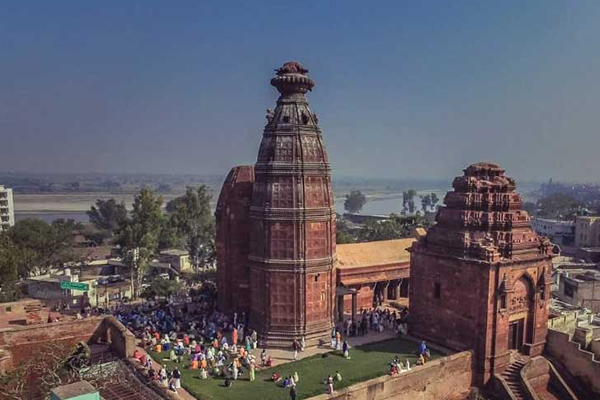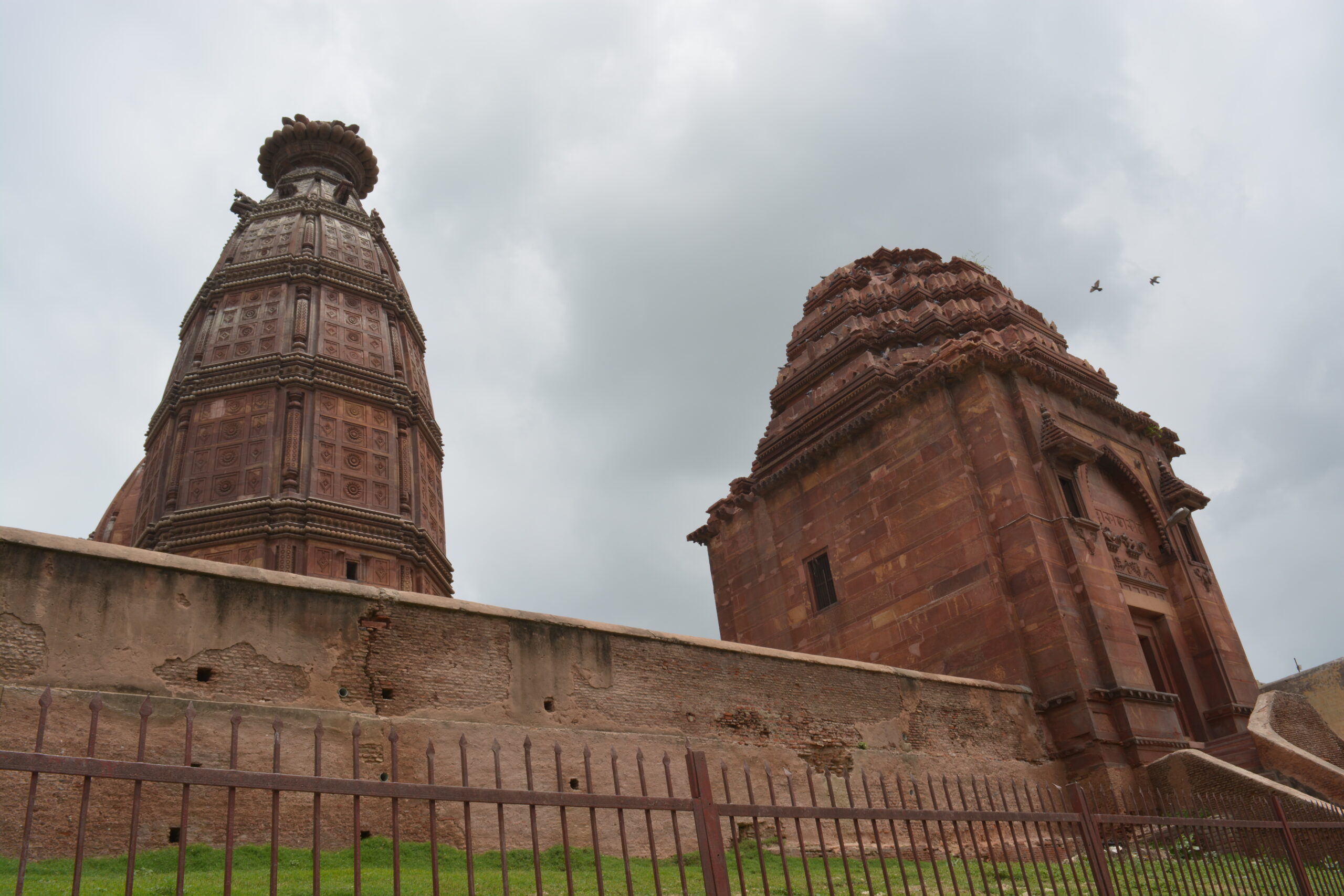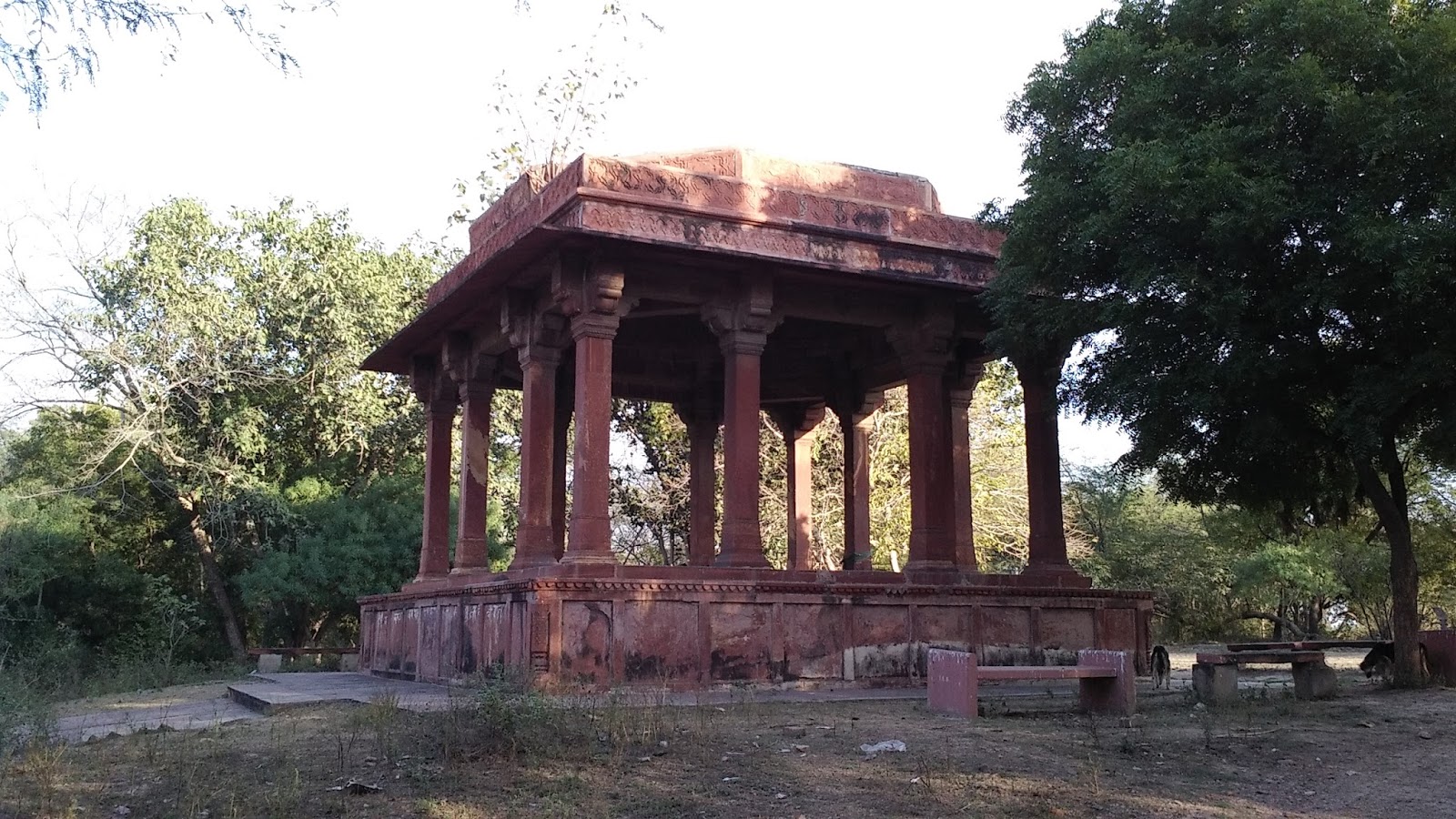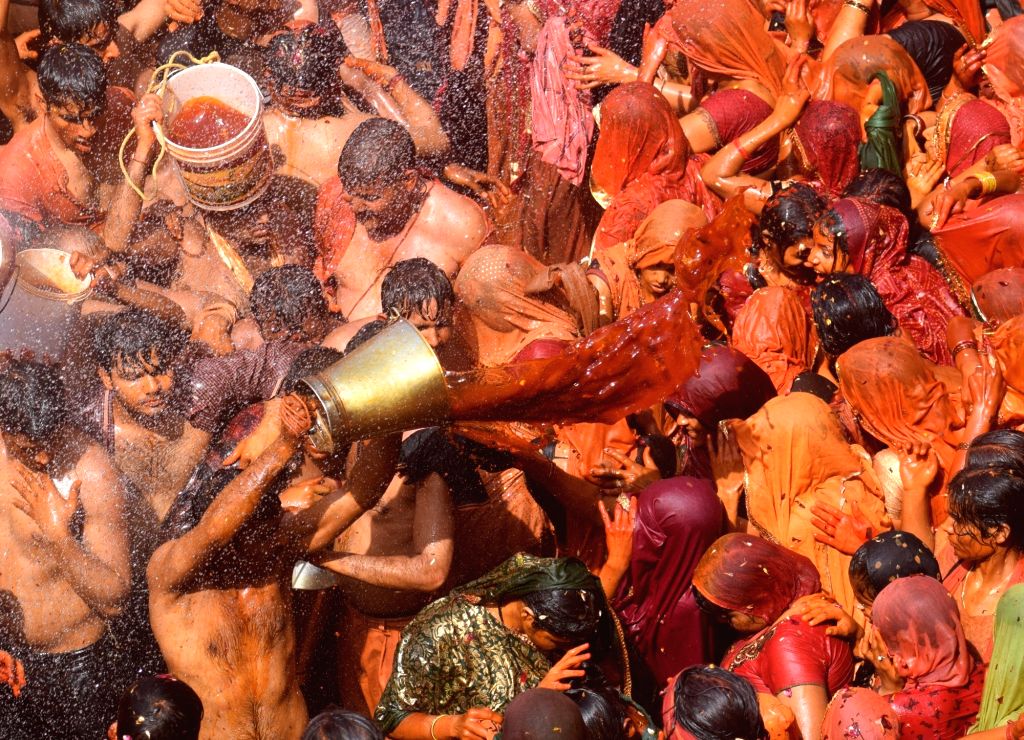2024.04.17 (Vrindavan Today News): The Archaeological Survey of India (ASI) is set to commence conservation efforts on the historic Shri Madan Mohan Temple, dating back to 500 years. The ASI will hire the skilled artisans from Fatehpur Sikri. The temple, adorned with intricate carvings and symbolic motifs, requires urgent attention to safeguard its structural integrity. Located near the banks of the Yamuna River on the Parikrama Marg , this temple stands as a testament to India’s ancient architectural marvels.

The ASI has embarked on a three-month restoration project at the Madan Mohan Temple. One of the key strategies in the conservation plan involves the placement of red stones on the ground around the temple. This innovative approach aims to mitigate the potential damage caused by water accumulation, especially during the monsoon season.
Deepak Nauhawar, an official from the Indian Archaeological Survey (ASI), stressed the need of this measure, emphasizing the risk posed by water seepage to the temple’s architectural elements. He said that the green area with the grass on the top of the hillock will be covered with the stone.
Furthermore, the conservation team will address existing damages to the temple caused by weathering and erosion. Stones that have deteriorated due to exposure to rainwater will undergo meticulous restoration work. The ASI has sourced raw red stones from Banshi and Pahadpur in Rajasthan to replace the damaged ones effectively.
Skilled artisans from Fatehpur Sikri, renowned for their expertise in restoring ancient monuments, have been enlisted for the conservation project. These craftsmen, who have previously worked on heritage sites in Agra and Delhi, bring a wealth of experience to ensure the meticulous preservation of the Madan Mohan Temple.
As India continues to cherish its cultural heritage, initiatives like the conservation of the Madan Mohan Temple play a crucial role in safeguarding the nation’s legacy for future generations. Through collaborative efforts between government agencies, skilled artisans, and local communities, these endeavors serve as a testament to India’s commitment to preserving its rich cultural tapestry.





